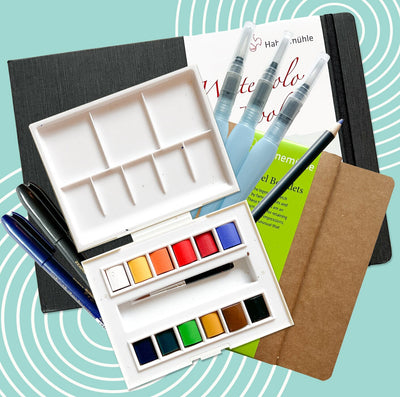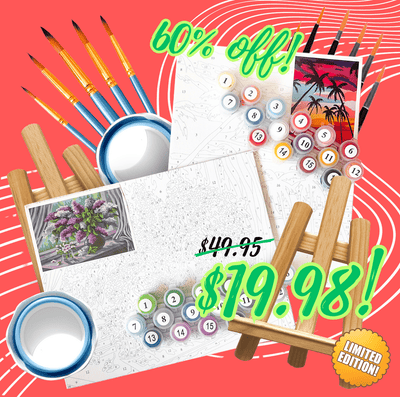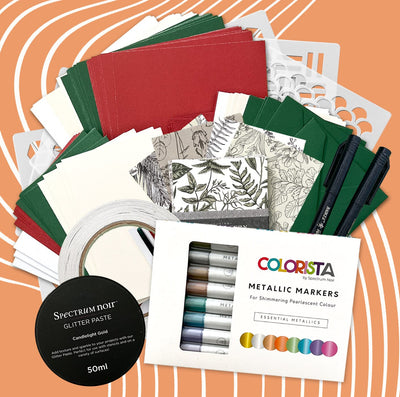Hi there Muse Kit Pals!
Spring is in the air, and with it comes your next Muse Kits box. This month we have something very exciting for you: comic strips!
Whether you’re an avid Marvel fan, a reader of graphic novels, or simply enjoy a classic Garfield, we have all encountered cartoons at some point in our lives. They can be serious or goofy, action-packed, or full of jokes, so what could be better than getting to create your very own comic strip featuring some original characters?
The brochure in your box is there, as always, to provide an easy-to-follow guide to get you started with your comic strip, but here we want to take things a little further. Once you’ve gained some confidence with the basics of comic creation, there is so much room for you to expand and push the boundaries to truly express yourself, and we want to show you how. This blog will serve as an inspiration for how to explore your new-found comic strip horizons and create something stunning and unique to you.
So, if you’re keen to stretch your comic artist’s muscles, let’s gather our supplies and dive into the wonderful world of comic strips.
Getting Started
So, before you get going with testing the comic strip boundaries, you need to get to know the basics. Our brochure, as usual, features a comprehensive guide that will get you started on your comic journey.
There are a few elements that you need to take away from these first steps:
Establish a character - This may seem scary, but don’t worry; there is no pressure to come up with a fully-fledged original character (also known as an OC) right away. As you play with the medium of comic strips, you will naturally play with different characters until you find some that you want to flesh out a little further.
Crisp, clean lines - Most comics consist of thick black linework filled in with solid planes of color. These lines outline the characters and speech bubbles but also indicate things happening in the frame, such as movement. Keeping your linework clean and sharp is a key to making your comic strip look professional.
Tell a story - The aim of a comic strip is ultimately to tell a story. The panels run in a sequential fashion, left to right in Western comics and right to left in manga and Eastern comics, and they should tell a story throughout. A strong story arc, character traits, and motivations will keep your reader engaged and create a strong comic strip.
Now that we’ve got all these in the bag, it's time to test the waters a little. To do that, let’s dive into how to take your comics up a notch.
How to Upgrade Your Comic Strips
Comic strips can be executed in so many ways the possibilities are endless! Once you’ve got the basics of this medium down, you have complete freedom to execute your comic in whatever way expresses your creativity and story in the strongest way.
Here we are going to go into four different ways that you can get started with this expansion progress but feel free to use these as a springboard for your own testing and expression as you learn and grow.

Change Up Your Panel Size
There is a small section at the end of the brochure that shows how to get started with different panel shapes, but we wanted to expand on it here because it can truly be so effective.
Like our comic strip paper, we like to start with a strip or block to play within. Within these boundaries, it's tempting to keep it simple and use horizontal strips of evenly shaped panels stacked on top of one another.
However, there are so many more possibilities within a straightforward block.
Instead of working with a few small blocks, you can create a full strip as one panel to depict a scene more fully or really show off a piece of action that is crucial to the plot. Alternatively, you can split up the blocks to create smaller blocks that isolate important moments.
As our brochure demonstrates, you can also stray away from the strict geometry of a block and create other polygonal shapes by creating a border that is diagonal rather than straight. This can be visually appealing and create a feeling of tension and emotion that reinforces the story.

Use Your Words
Although the artwork is key, the other crucial factor that makes comic strips what they are is the text.
Comic book dialogue is placed in speech bubbles that lead to each character, so you know who is speaking, but if you think a little outside the box, these words can be more than just a necessity.
Try playing with fonts and text size to emphasize certain words and exclamations. Writing the phrase ‘What?’, for instance, has much less impact than: ‘WHAT?!?!’, which translates well to comic strips. You can even use full panels to highlight text on its own to really make an impact.
Typography can be used as a physical art form on its own that makes a significant impact on the style and emotion of the comic strip, so we encourage you to work with it and try something new.
almost like watercolor.

Pick Your Palette
Choosing the color palette is a crucial element in the comic strip process. It is the first thing the viewer will see, so your color choice needs to tell a story and establish the mood in just a cursory glance.
Once you’re comfortable with black and white cartoons, we recommend starting with a limited color palette. There are so many great cartoons that use a handful of colors to get the message across, and it is so effective when it's done right. Choosing to work with few colors began as a necessity as printing color cartoons in newspapers was costly, but now this has become a stylistic choice that artists become known for.
Too many colors on the page can confuse the eye and make it hard to know what you’re focusing on. By using color strategically, you can emphasize elements in your scene to guide the viewer into taking in the piece in the fullest way possible. Do not underestimate the power of color.

Don’t Forget Your Lineweights
We talked a little about linework in the basics section, but we really wanted to impress upon you how important and flexible the line quality is.
Once you’ve nailed your clean and crisp linework, you can start playing with the lineweights. Areas that are close up will have a thicker line weight, while elements that are further away become thinner. This will add a crucial dimension to your cartoon. You can also vary your line thickness within a line to define your character or imply movement.
Try utilizing linebreaks, dots, and dashes to imply translucency, distance, or texture; a line doesn’t have to be continuous to define effectively. There is a lot more you can do with linework that initially meets the eye, and harnessing this power is only going to improve your work and make it more dynamic.

When it comes to comic strips, the world is really yours for the taking. If you let your imagination run wild and test the boundaries of the medium, you’ll be able to create stunning cartoon strips that are totally unique to you. We can’t wait to see what you come up with.




